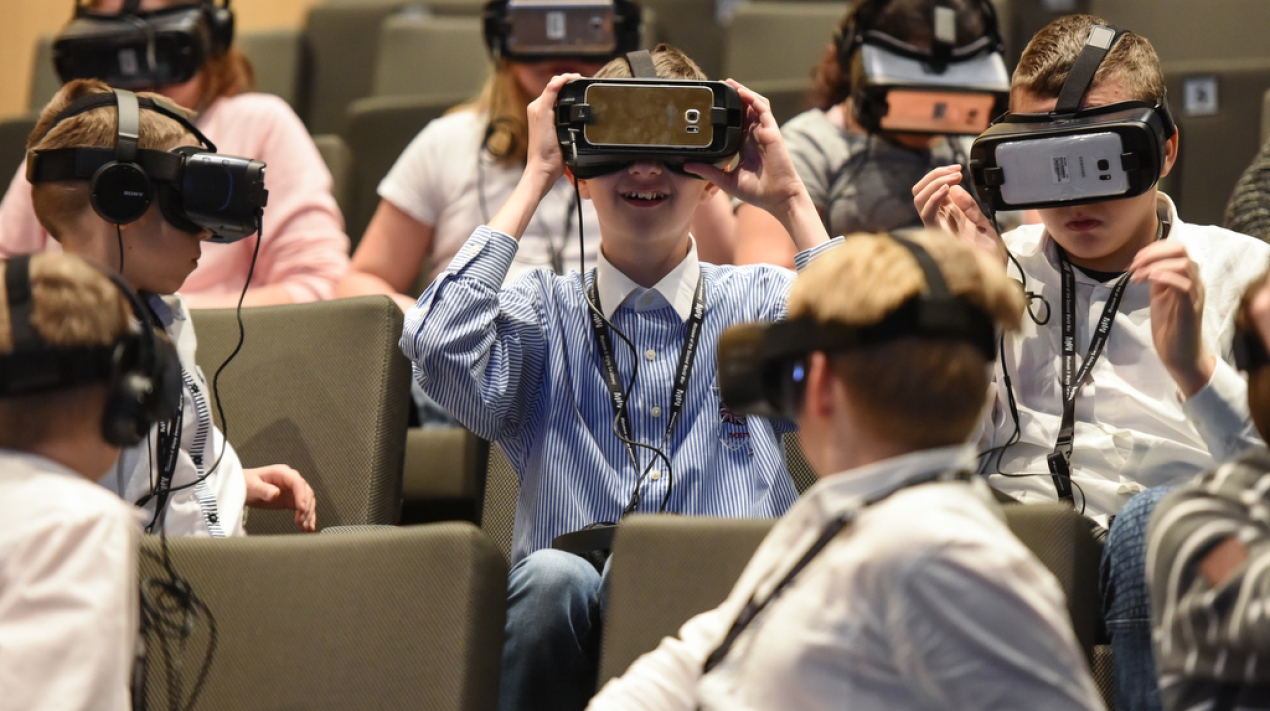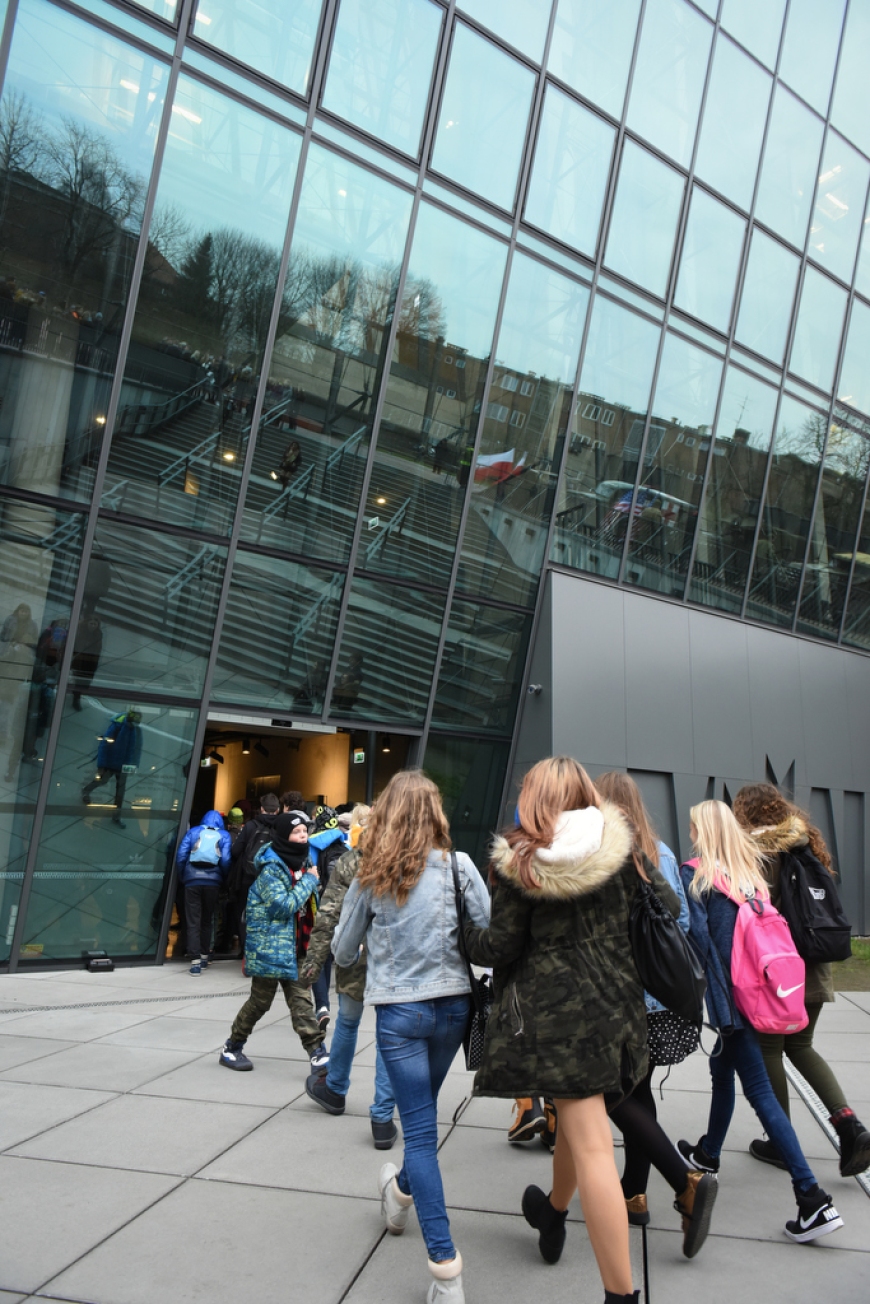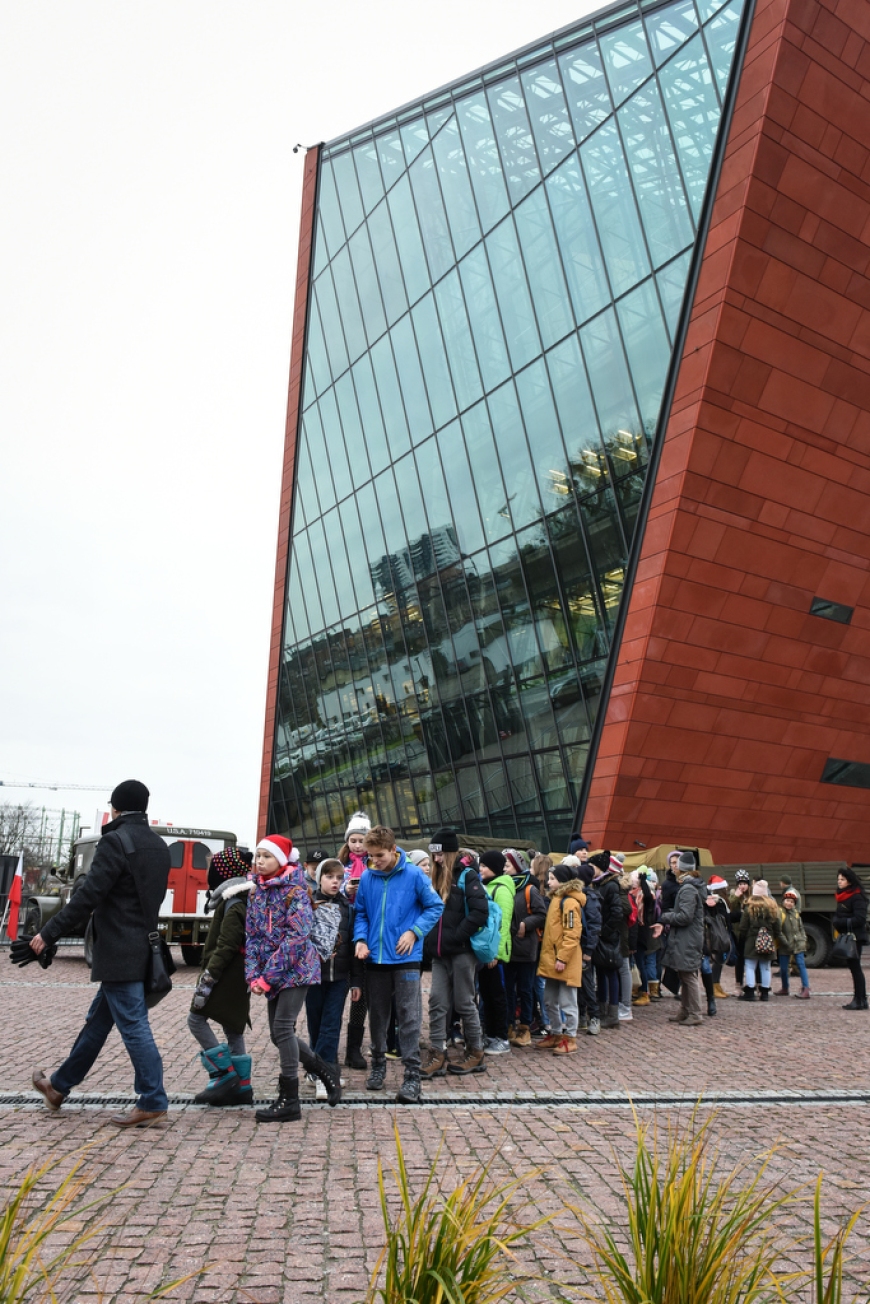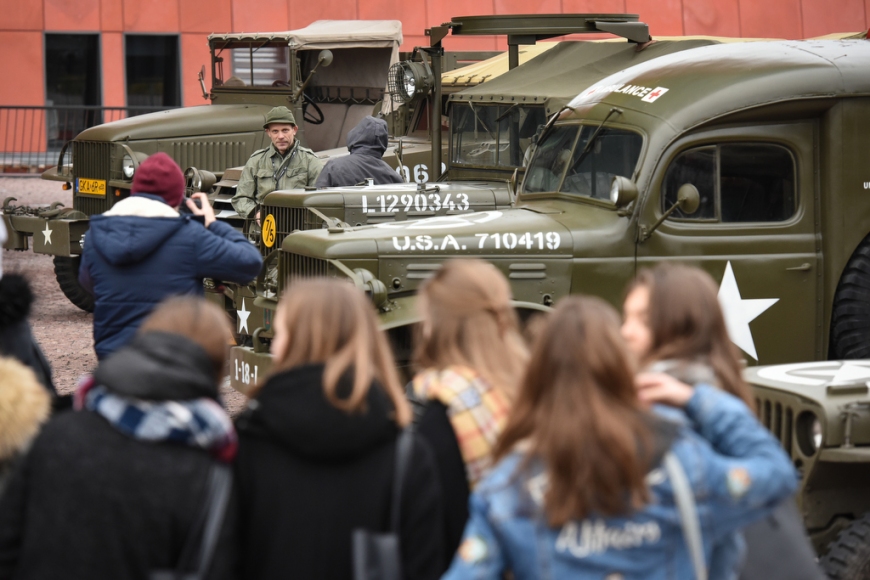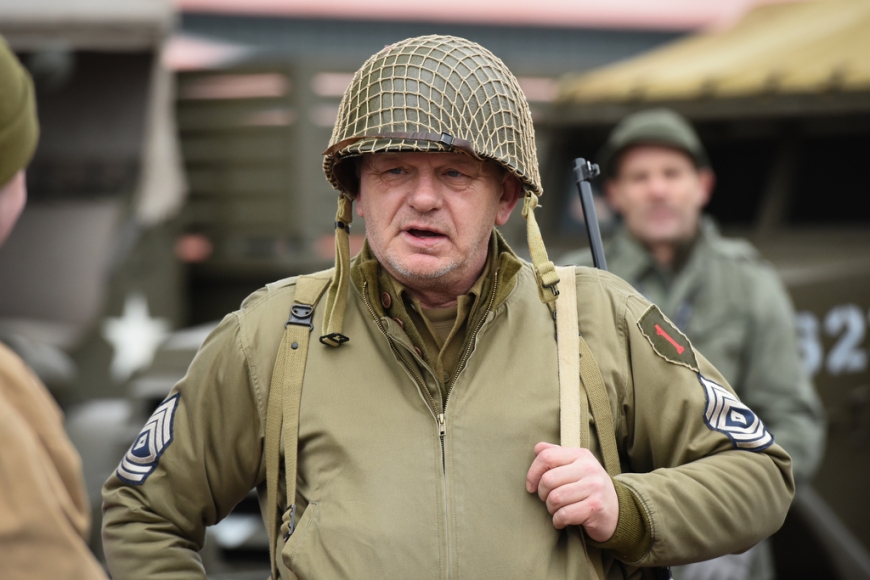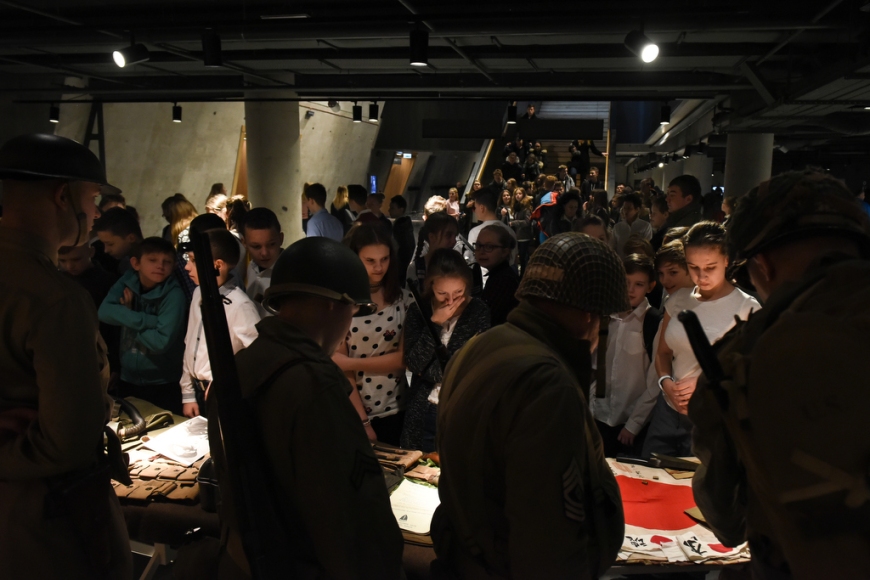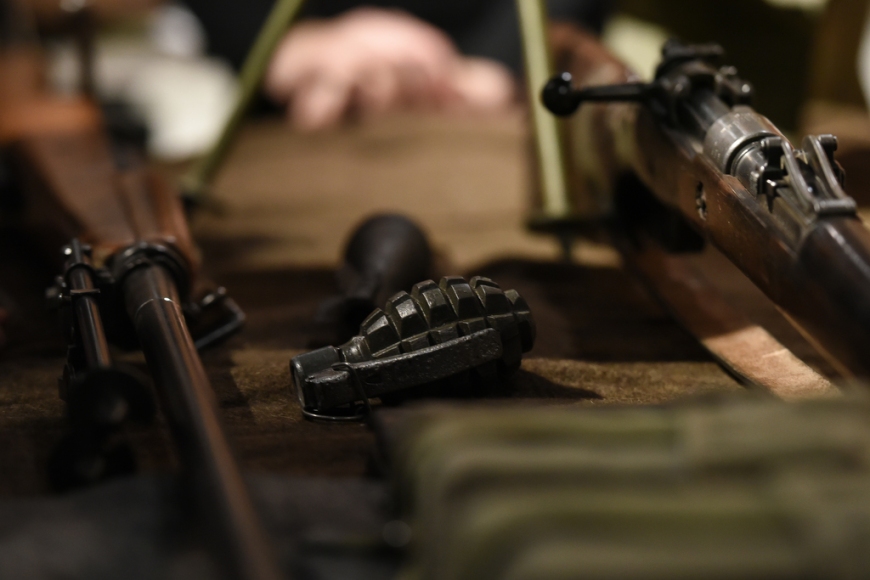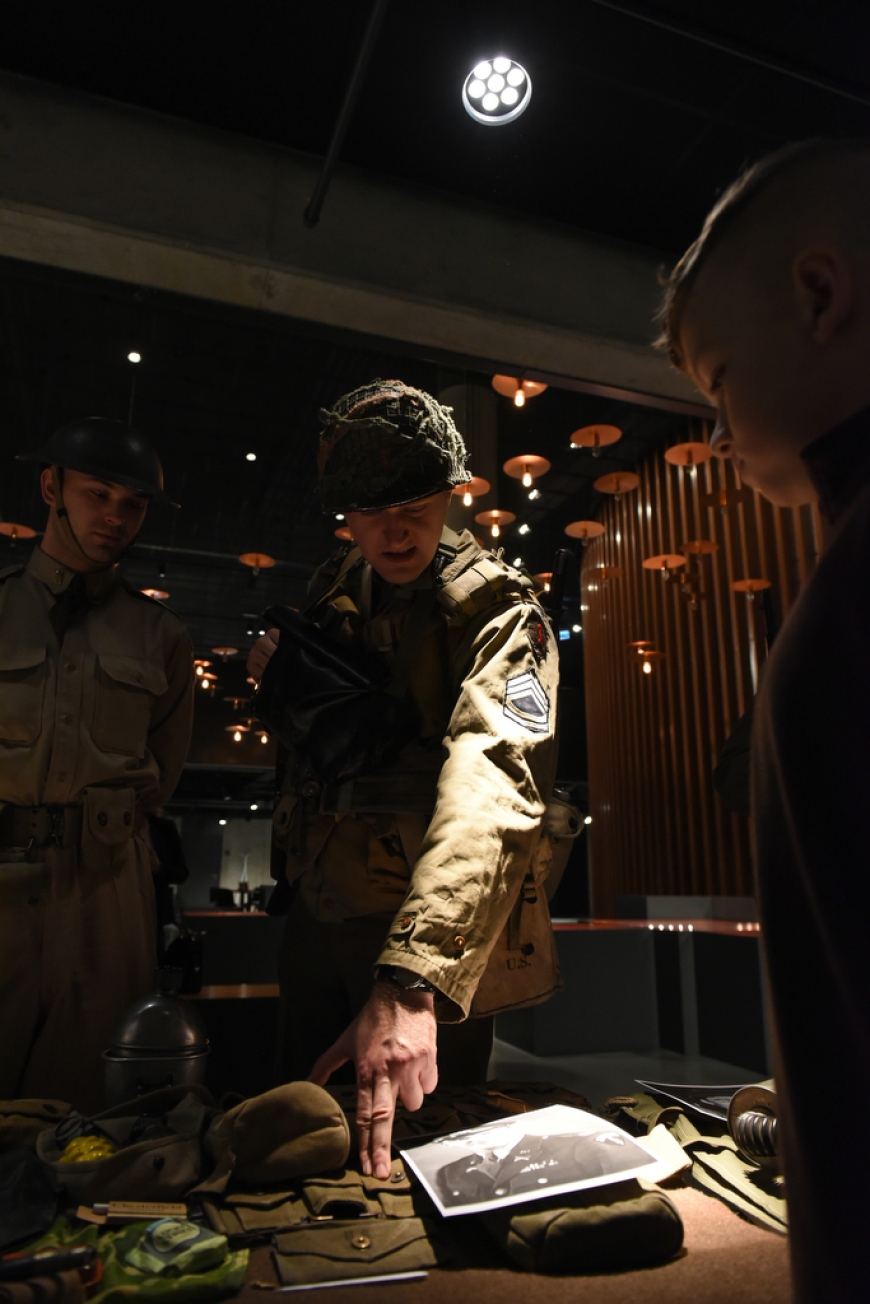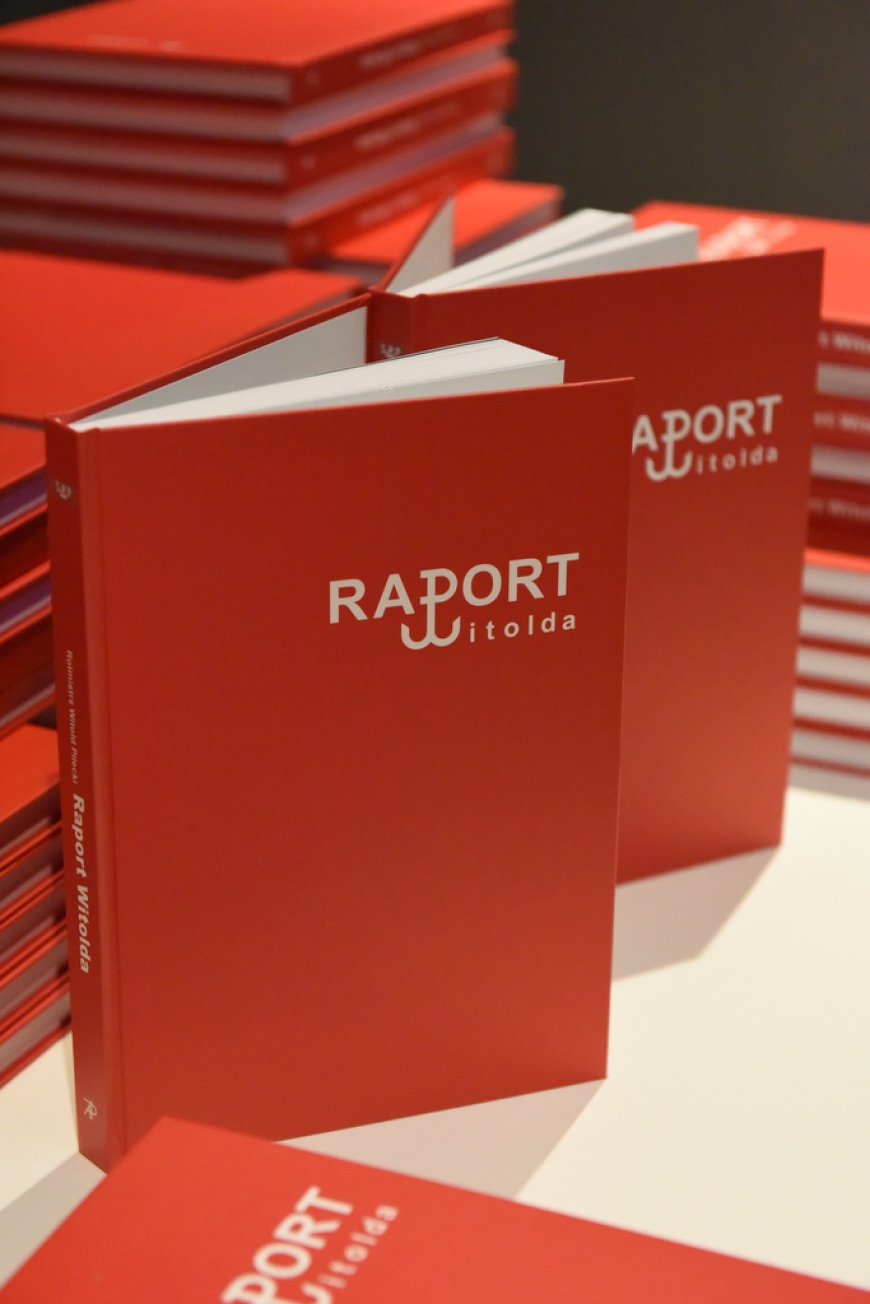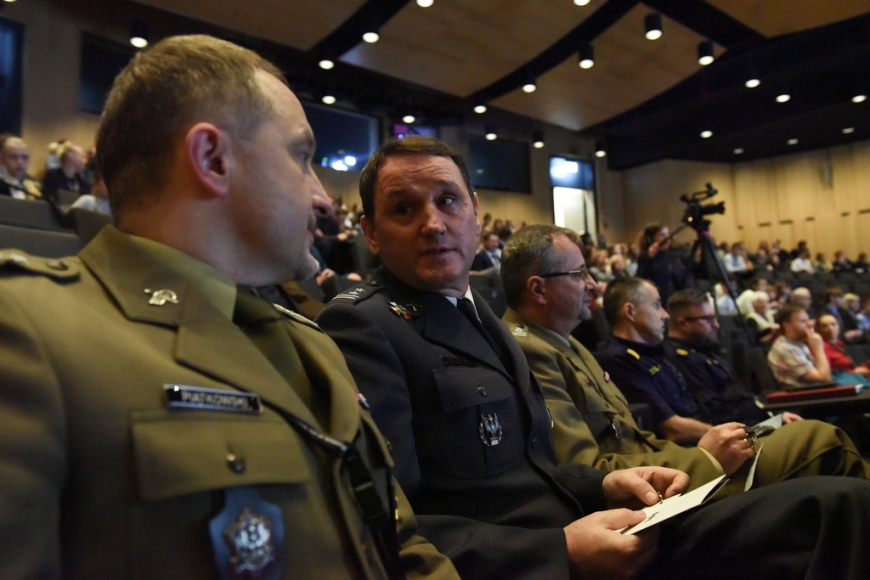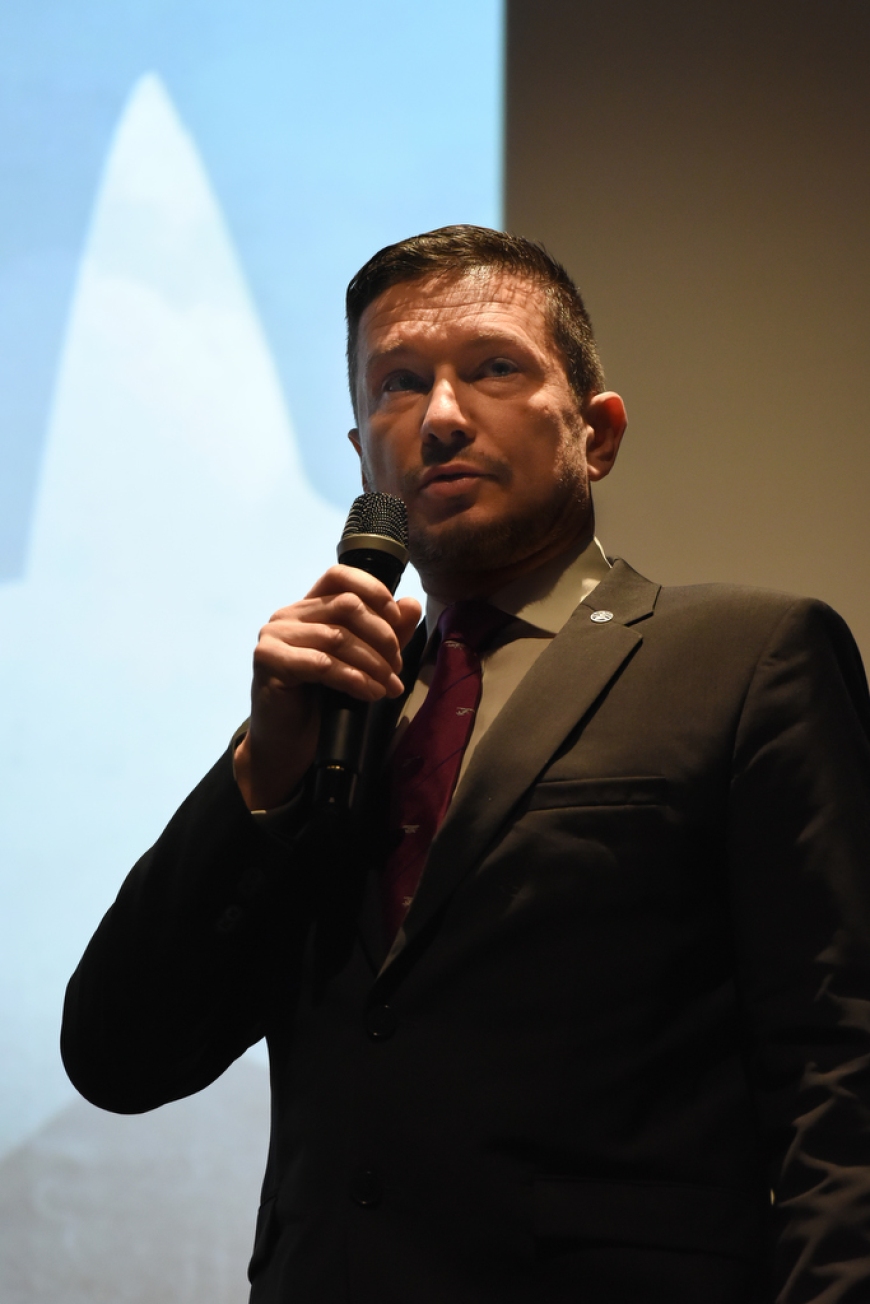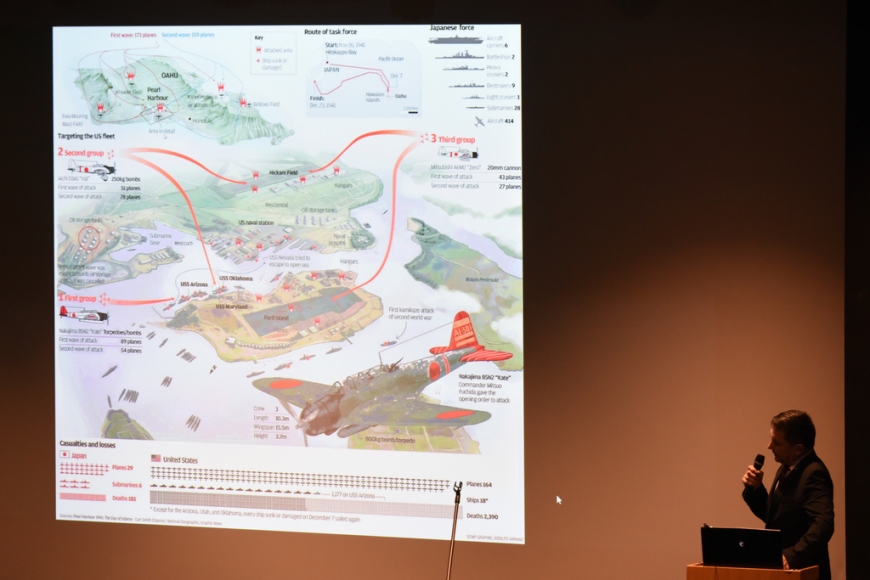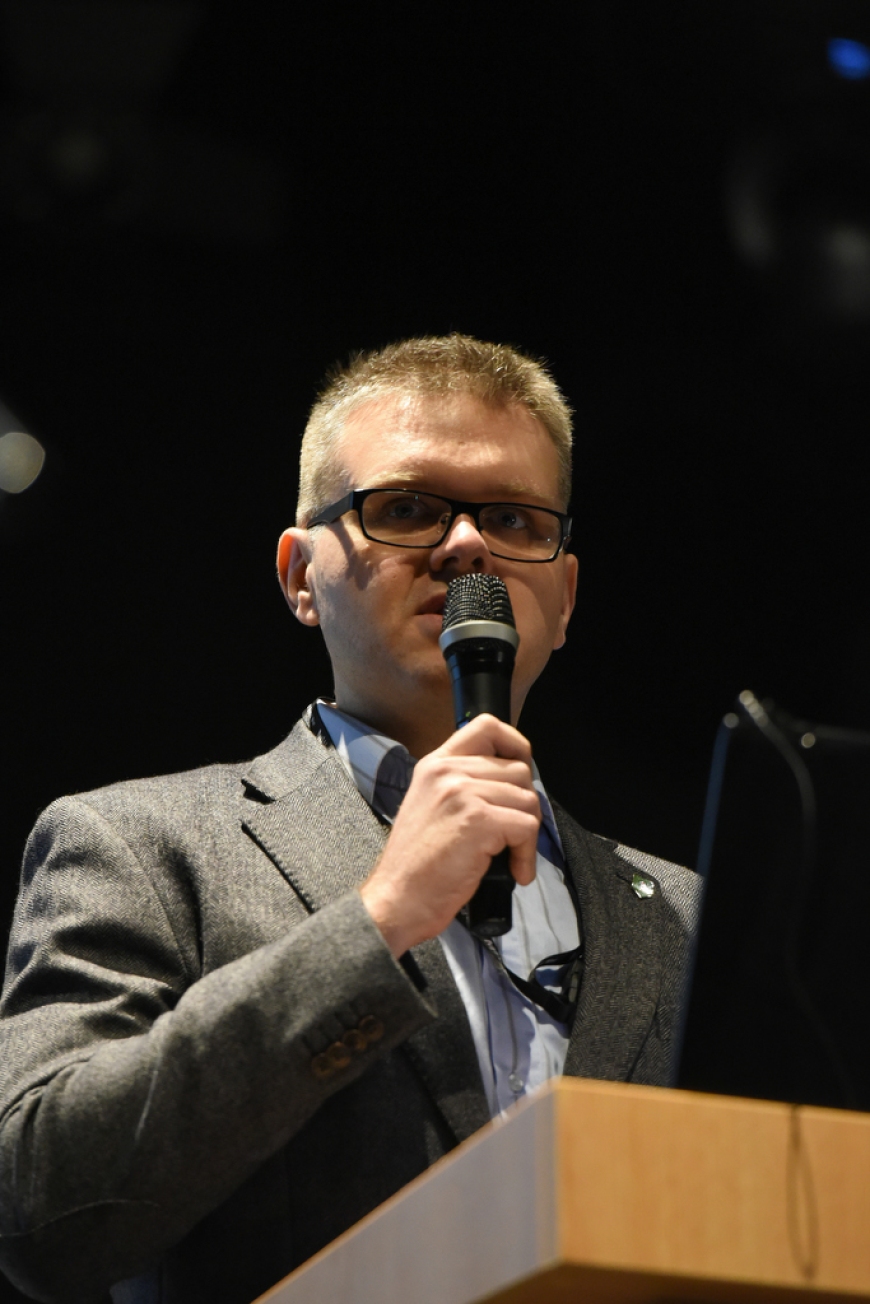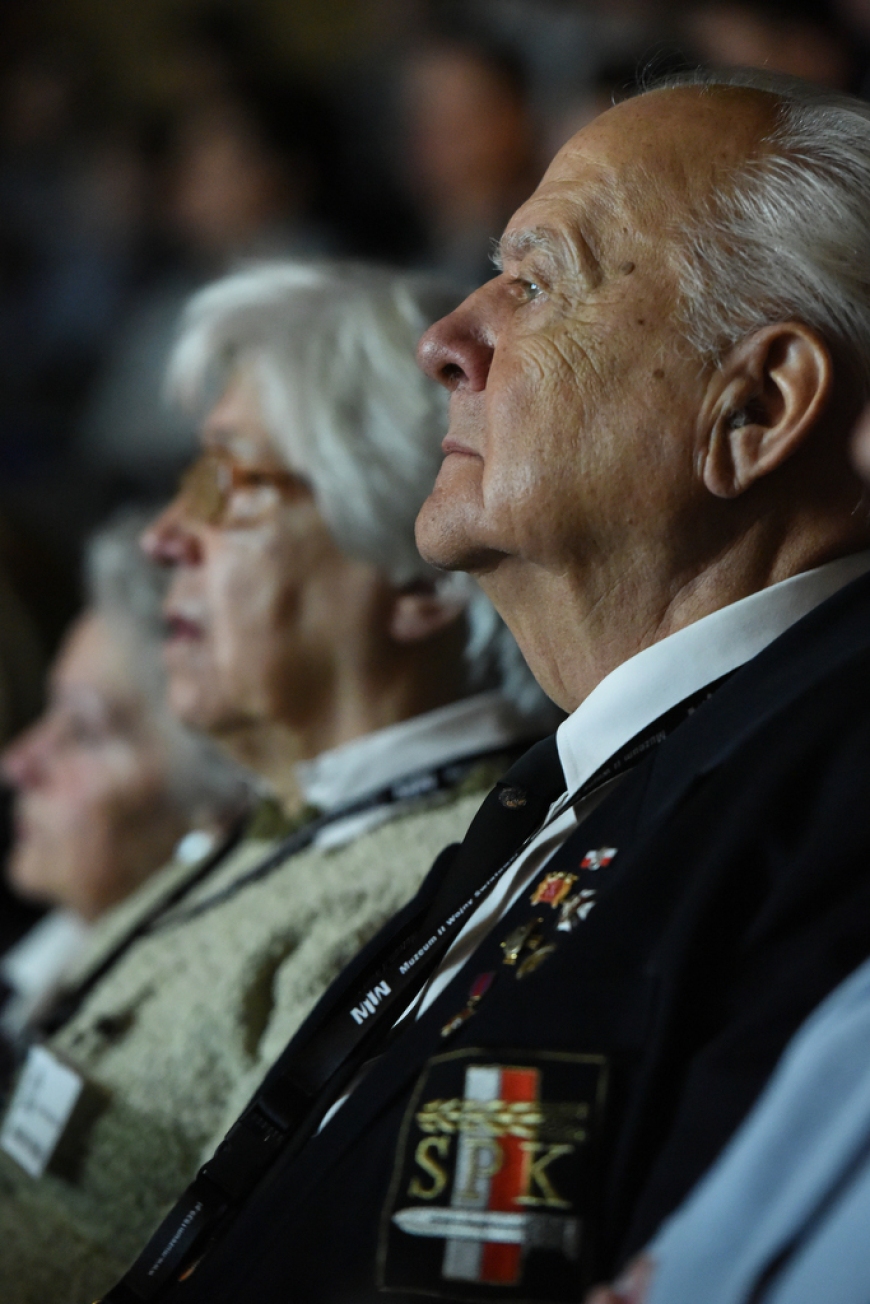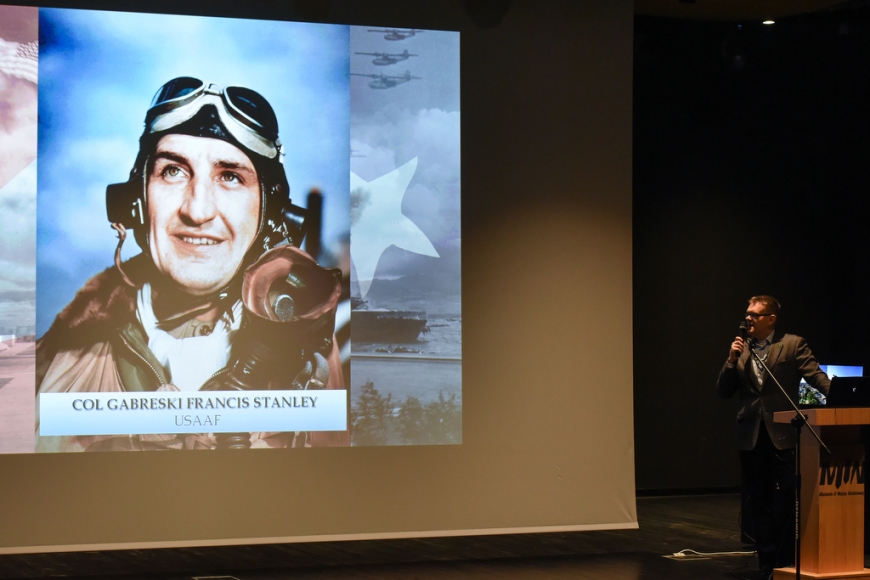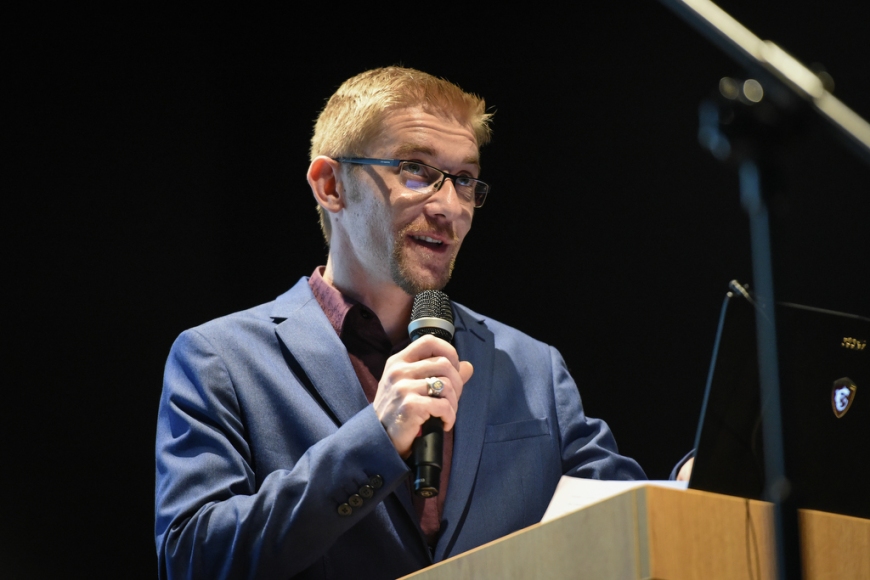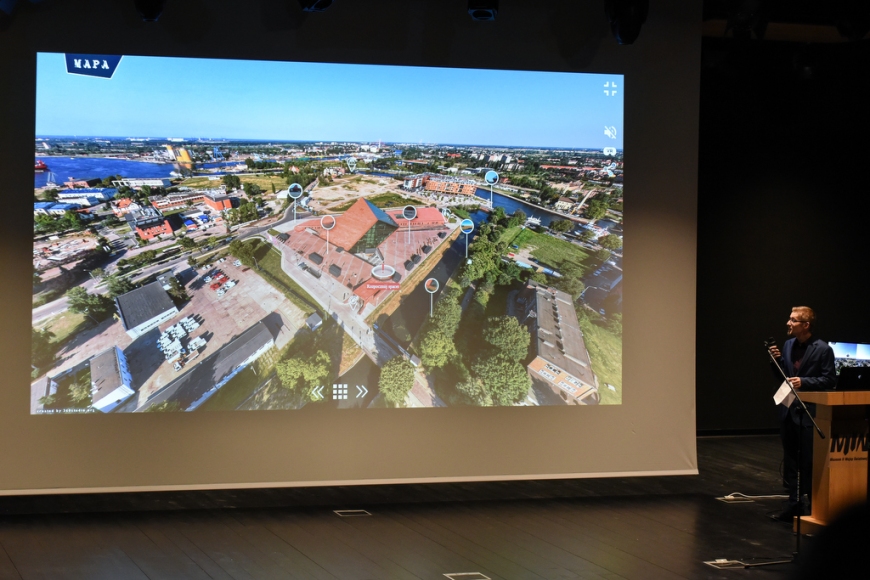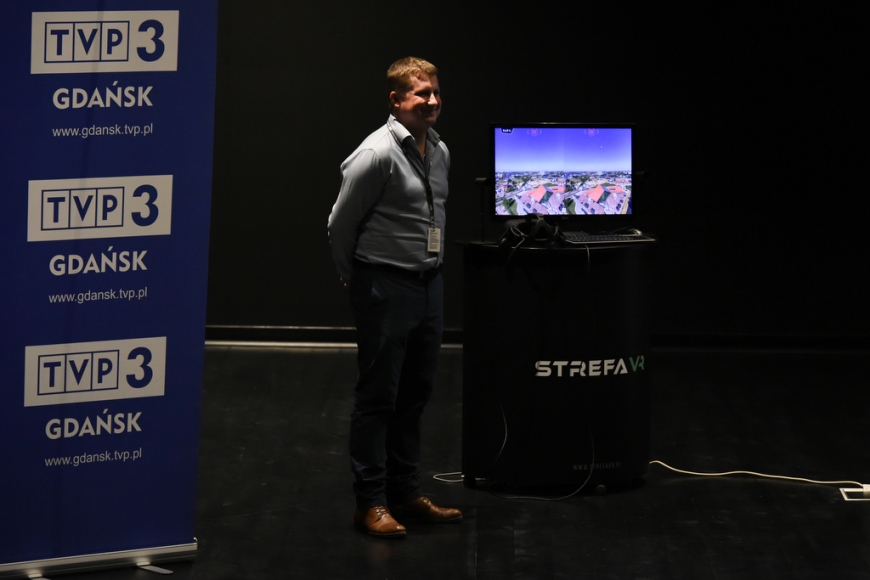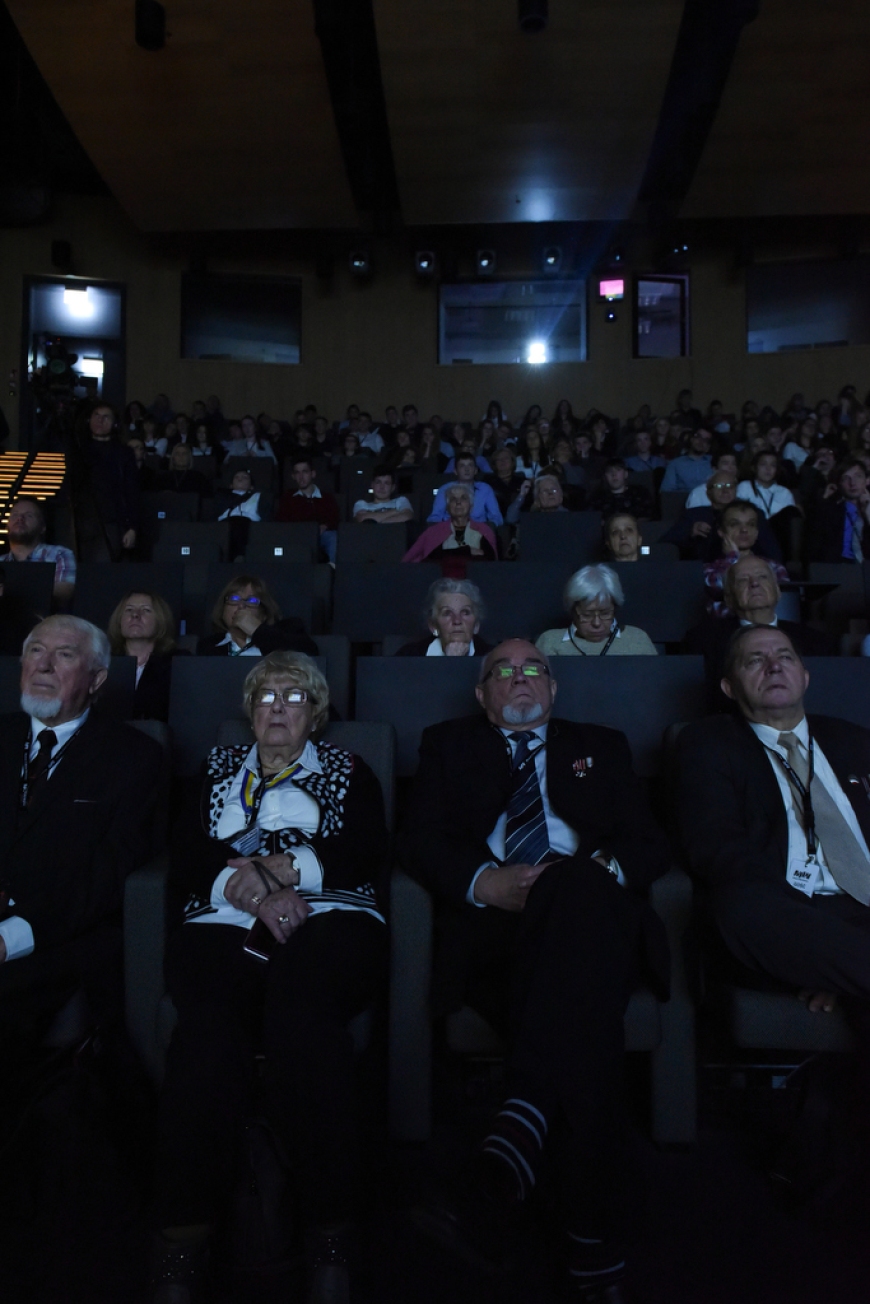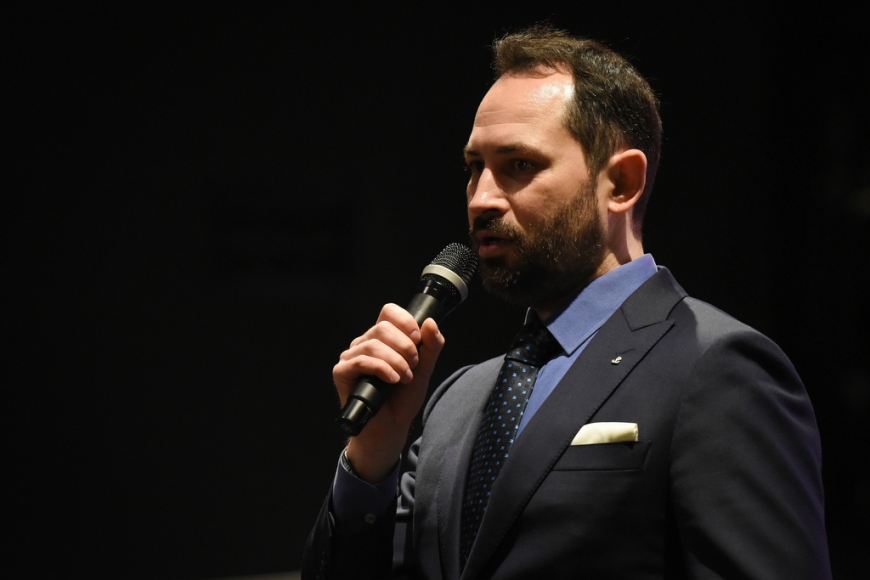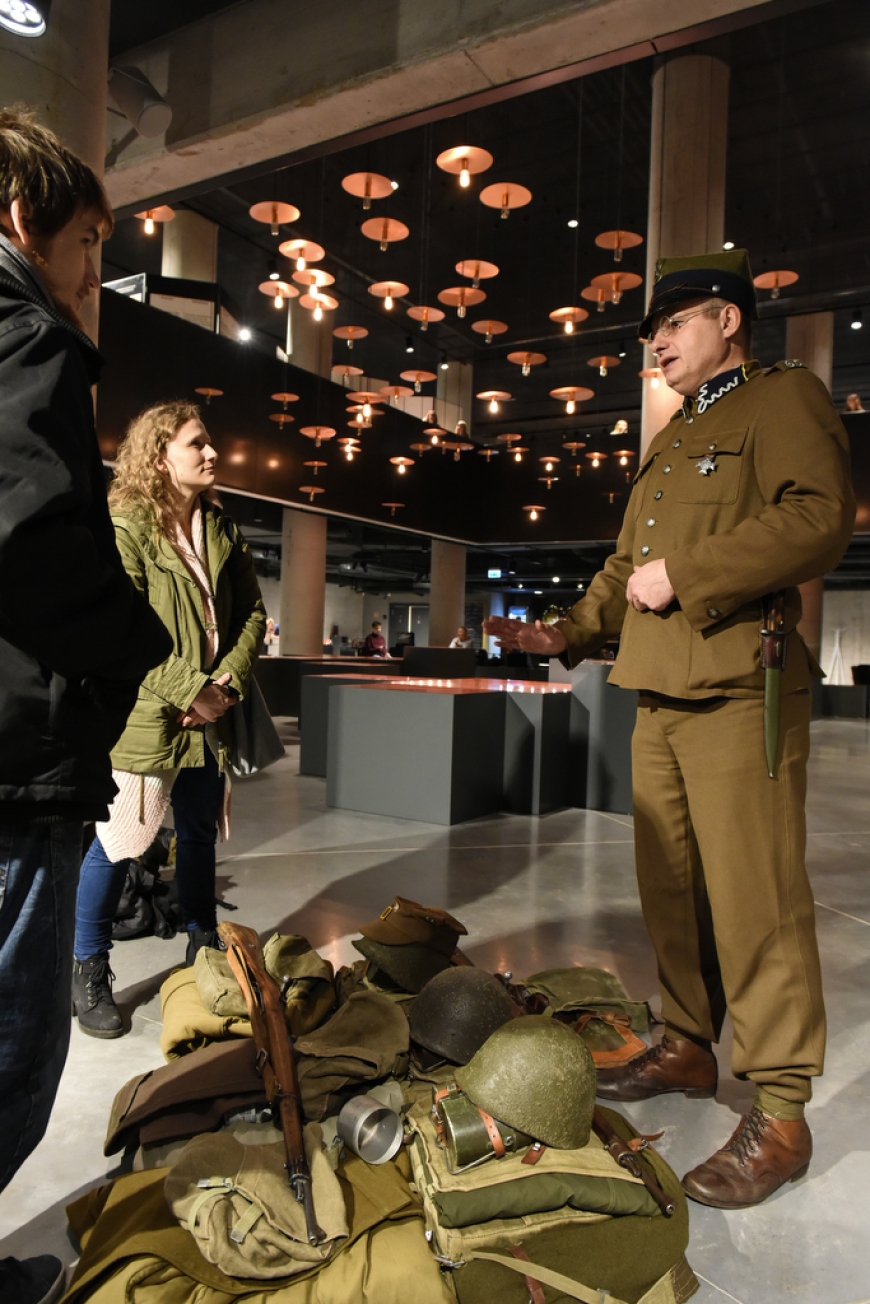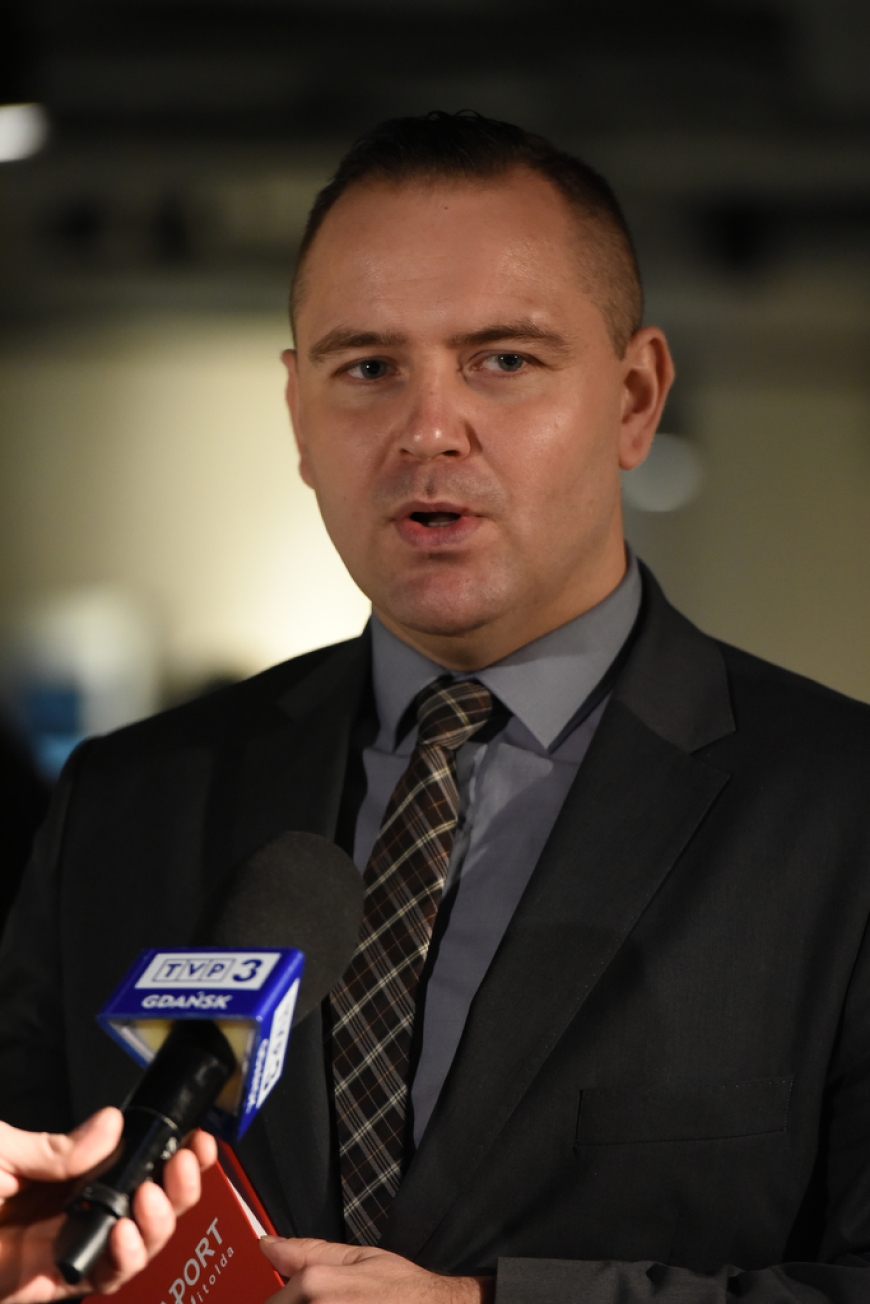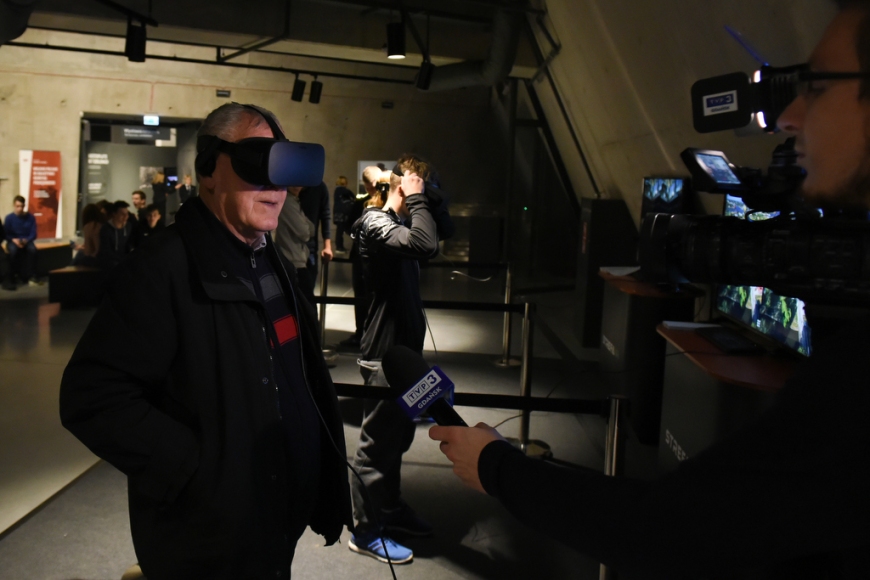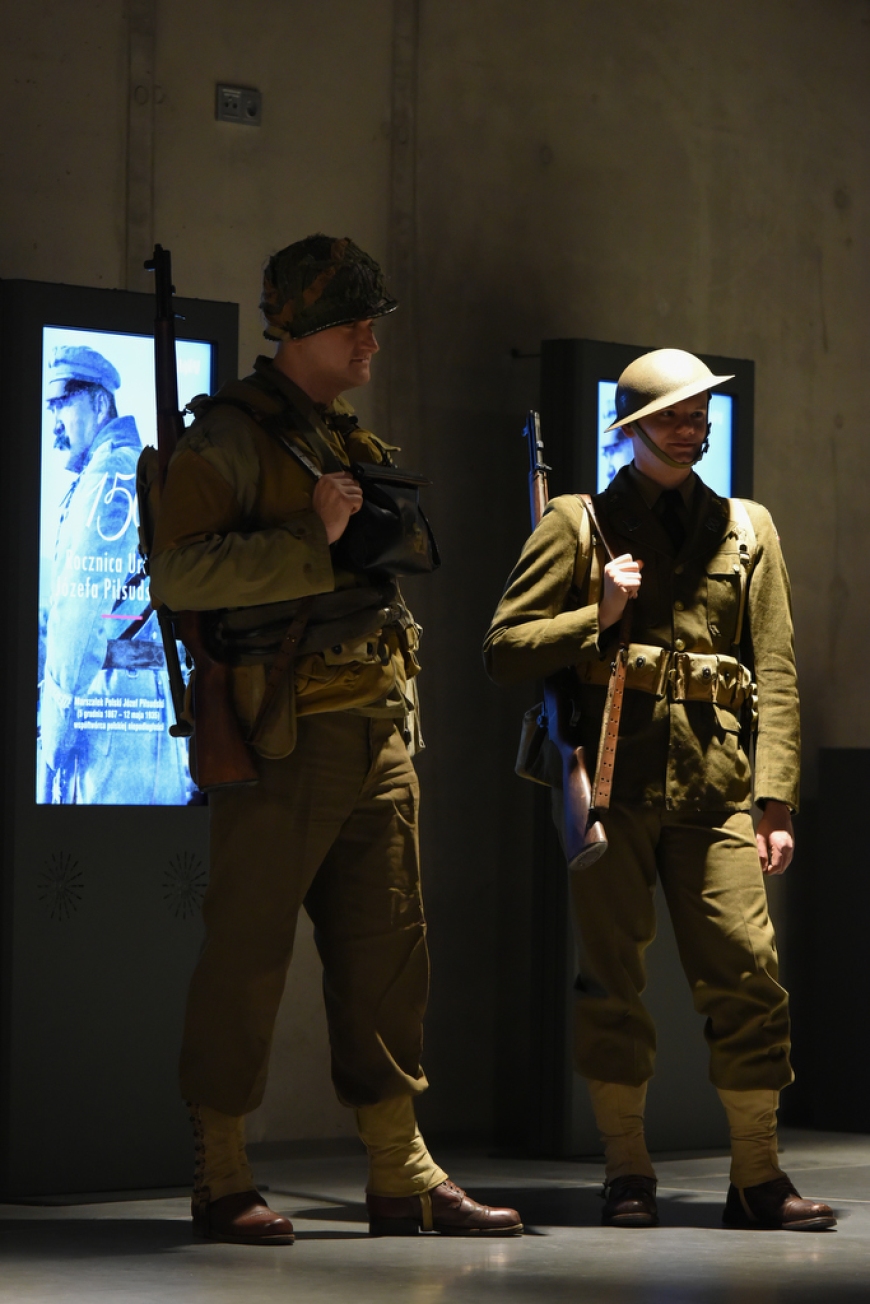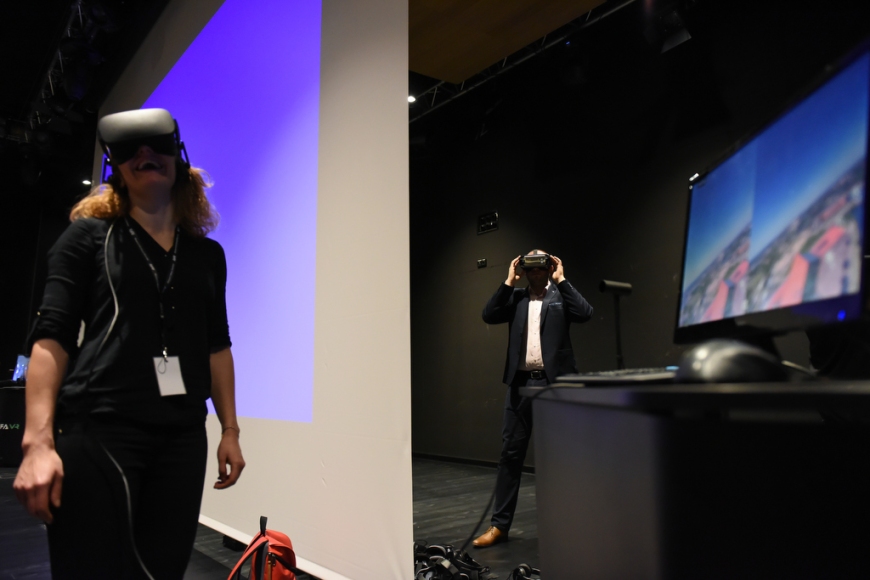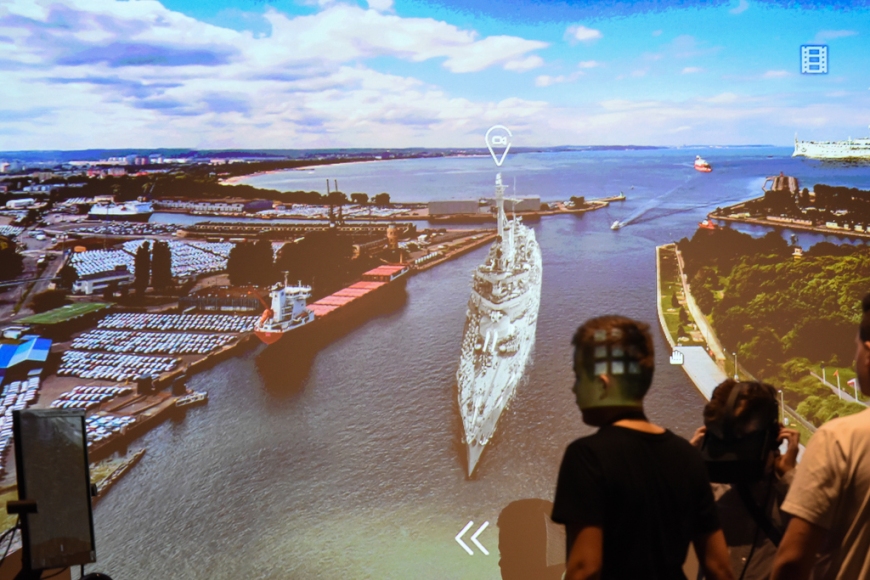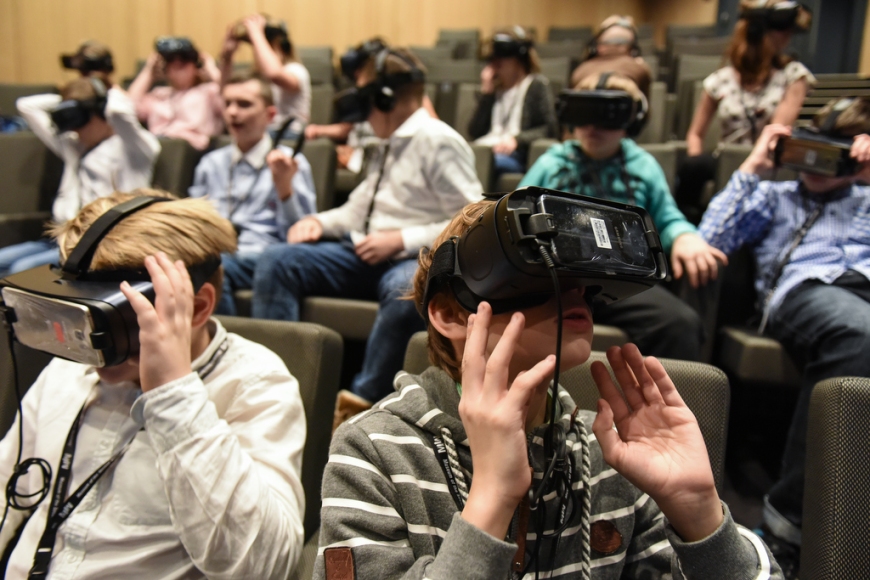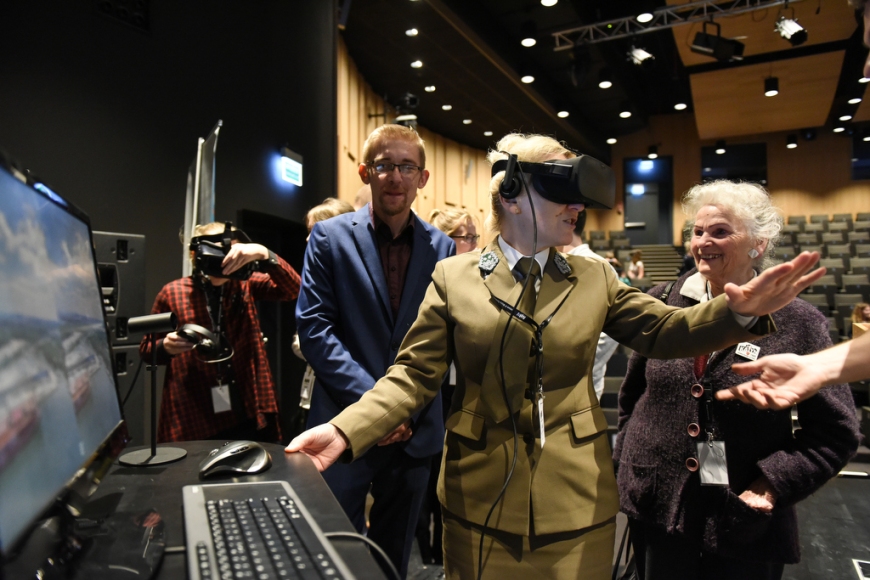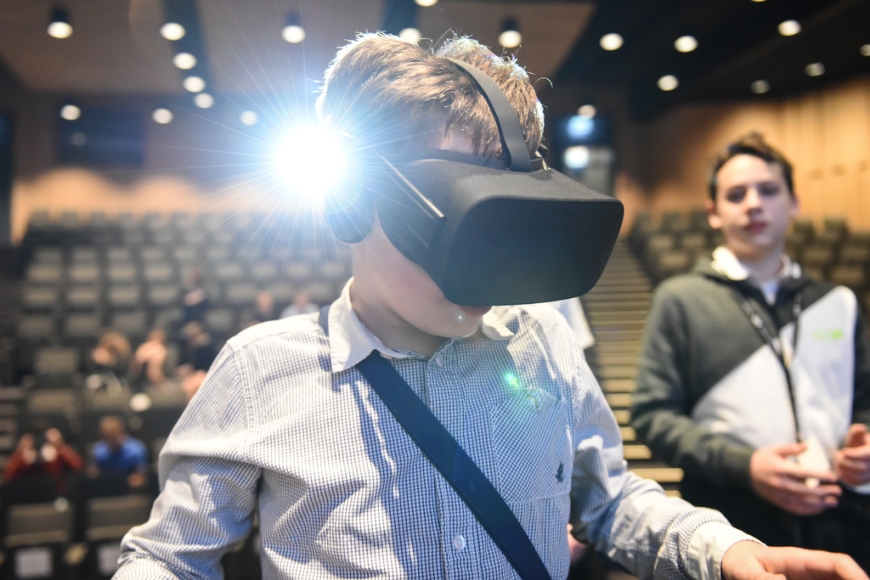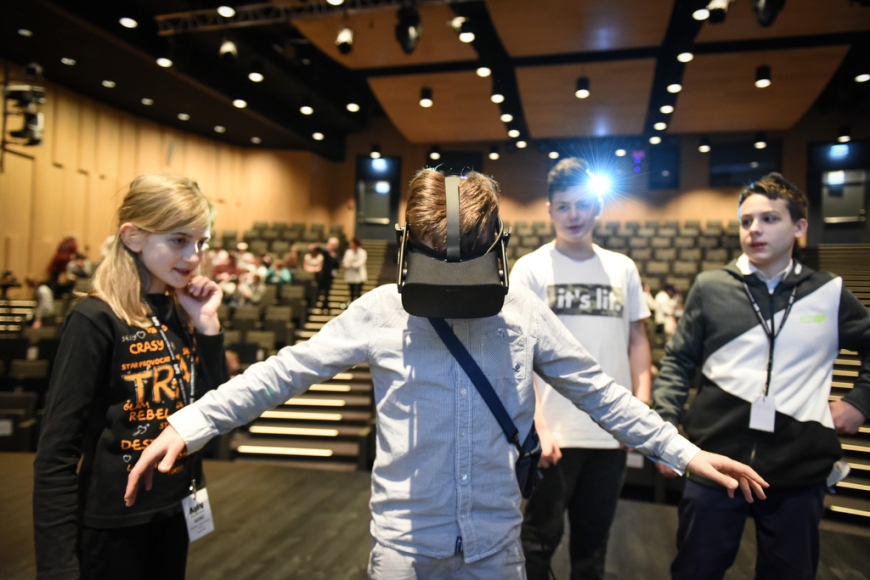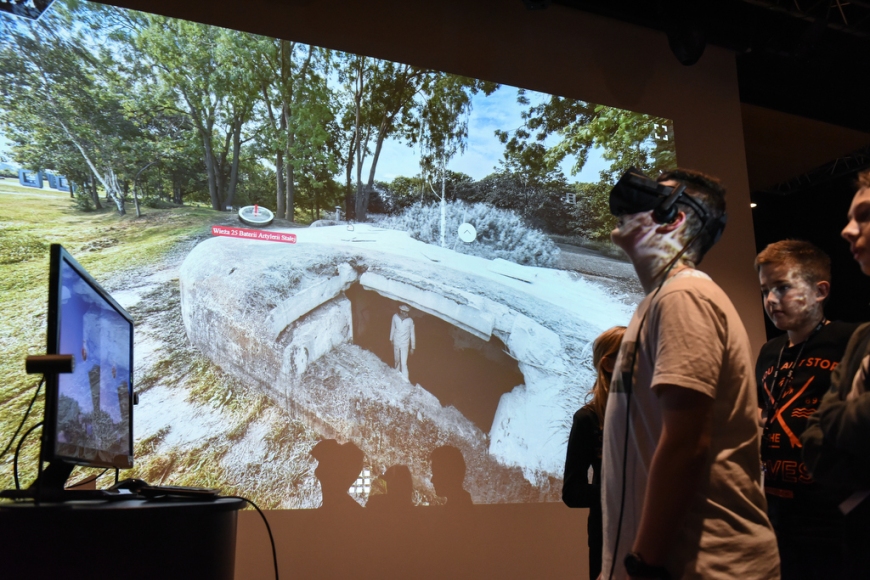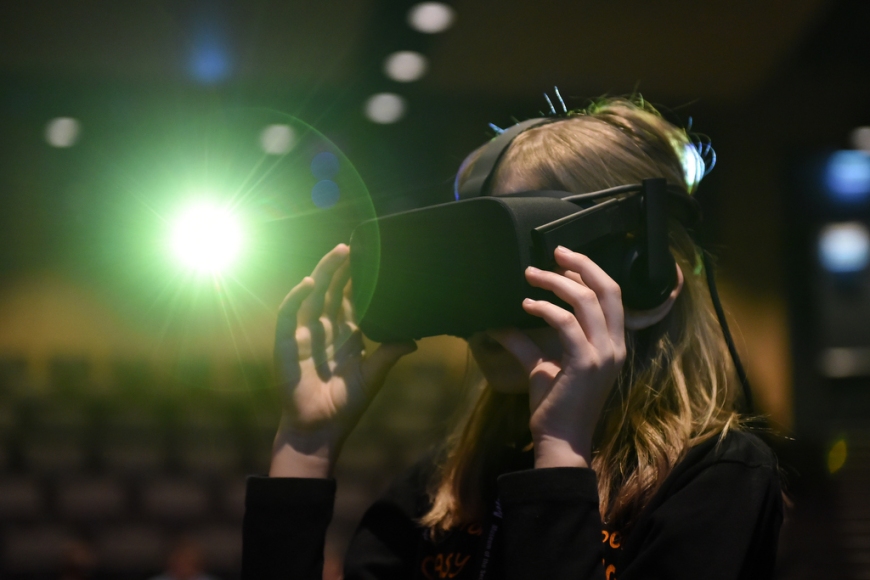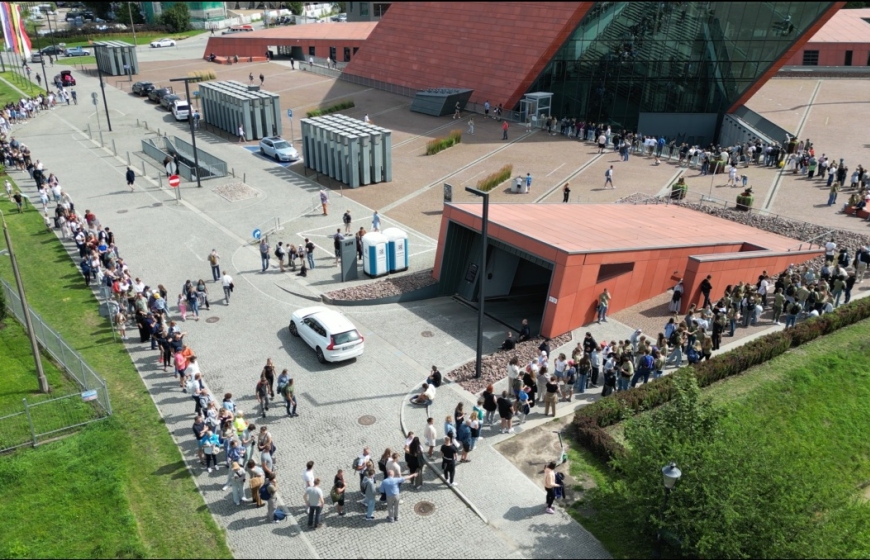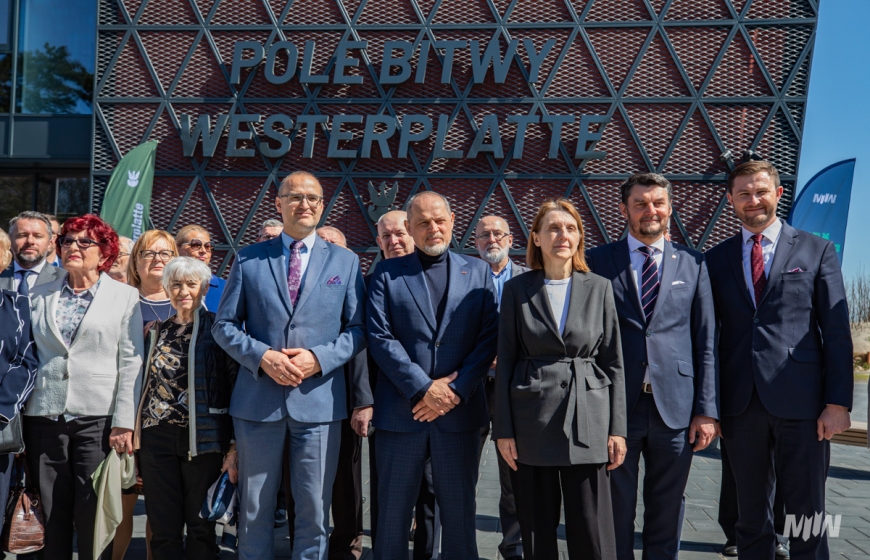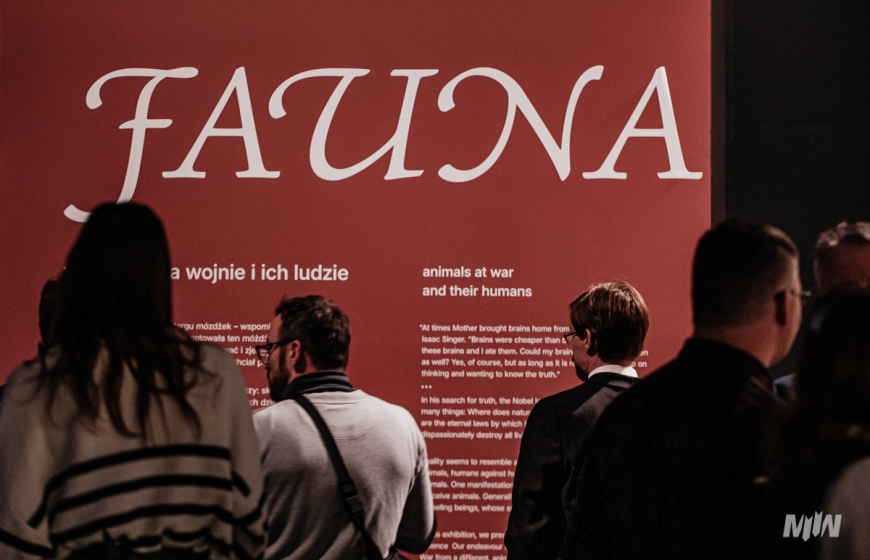The museum commemorated Pearl Harbor and Westerplatte
The Museum of the Second World War, under the theme "Westerplatte - The Polish Pearl Harbor", today commemorated the 76th anniversary of the entry of the USA into World War II. On this occasion, presentations of historical military equipment and thematic lectures took place, the new website of the Museum and a virtual walk around Westerplatte were presented and an audiobook, "Witold's Report", was introduced.
From 10.00 to 18.00 in front of the Museum building one could see historic military vehicles from the World War II period, which belong to the American army. In the Museum itself, guests were shown a presentation of uniforms and equipment of US Army soldiers from the World War II period and soldiers of the Polish Army stationed at Westerplatte in 1939. The highlight of the program was the VR display "Virtual walk around Westerplatte", which attracted the largest number of interested people. In special goggles, visitors could move around the premises of the former Military Transit Depot and participate in historical events that took place on the peninsula using archival photographs and audio recordings.
The official part of the event was opened by the Director of the Museum of the Second World War, Dr. Karol Nawrocki:
Ladies and gentlemen, today we are talking about something that has united two nations - the Polish Nation and the American Nation. This reminiscence should be started by introducing a person who became the foundation of this friendship and understanding: Tadeusz Kościuszko, who was, and will remain, a hero of both the Polish and American nations. He fought for the independence of the United States and, later, he was not only a great strategist and defender of Philadelphia and West Point, but he also fought for the independence of Poland, and Independence and Freedom of the First Polish Republic which, back then - when the Kościuszko Insurrection was taking place - was dying, but still fighting for self-determination. The Kościuszko Insurrection is a symbol of the fight for an Independent Poland and the First Polish Republic, so Tadeusz Kościuszko is a symbol connecting the two nations. Byron once said that '''Kościuszko' is a sound that makes emperors tremble."
Although it is not obvious, it is similar with Westerplatte and Pearl Harbor. Seven days of heroic defense of Westerplatte after the Germans invaded the Second Polish Republic without declaring war; a heroic defense, which was ultimately a military defeat, led to the word Westerplatte becoming a symbol of the Polish attitude – not only towards the German occupation, but also towards the Soviet occupation. An attitude of an all-out fight for freedom - Poles love freedom and will fight for it - an attitude that can be found in the words, that the significance of the fight should come from values worth fighting for, and not in the chances for its victory. This is why Westerplatte symbolizes the Polish struggle for freedom in the years 1939-1989.
It is similar to Pearl Harbor, after all, during this quarter of an hour of the Japanese attack and in the second phase of this short battle, the Americans lost the battle at Pearl Harbor itself and were crushed and devastated, with over two thousand victims. But Pearl Harbor became the beginning of the end of imperialism, not only Japanese imperialism, but also the evil that was German Nazism. Of course, this war did not end with freedom for Poland in 1945, but Pearl Harbor, despite the defeat, gave rise to a victory over undisputed evil – this connects these two symbols. Those who question the comparison of Pearl Harbor to Westerplatte should also consider that the victims of the same war died both at Westerplatte and at Pearl Harbor. Both of these places have become symbols of an initial defeat, but also provided the fuel for victory and symbols of the fight against German and Soviet totalitarianism - noted the Museum Director.
That is why today we are looking for bridges between Poles and Americans, referring to the figures of Kościuszko, Pearl Harbor and Westerplatte, and wanting to tell Americans, our friends, our allies, that we remember their sacrifices, today we pay tribute to them and remember their contribution to World War II. We remember, but we also ask for remembrance, of September 1, 1939, of Westerplatte and remembrance that at the time when the attack of Japanese imperialism on Pearl Harbor took place, in Poland not only soldiers had already died, but also nearly one hundred thousand civilians, women, children, Polish intellectuals, officials and, to this day, the symbols of this massacre of the Polish nation are Piaśnica, Szpęgawsk and Palmiry. Ladies and gentlemen, we remember and ask for remembrance - concluded the Director.
Afterwards, the Manager of the Westerplatte Museum and the War of 1939, Department of the Museum of the Second World War, Mariusz Wójtowicz-Podhorski delivered a lecture entitled "Westerplatte and Pearl Harbor - places and symbols of the beginning of World War II". The second speaker was Piotr Langenfeld - chairman of the historical association and a war correspondent, who spoke about Poles fighting in the US Army.
After this historical introduction, the Manager of the Department of Promotion of the Museum of the Second World War, Marek Krzemiński, presented the new website of the Museum to the public, which is a reflection of both contemporary technological progress and an attempt to meet the needs of the visitors. As part of the presentation of the new website, the Promotion Manager and Manager of the Westerplatte Department presented to the public the result of many months of strenuous work of archaeologists, historians, IT specialists and new media professionals – a 360° presentation of "A virtual walk around Westerplatte", an important element of the new website.
As a finale, the Coordinator of the project "Captain Pilecki - the invincible hero", Małgorzata Kupiszewska, presented the guests with "Witold's Report", an English version of the audiobook containing the famous notes of Captain Witold Pilecki, from KL Auschwitz, published by the Krakow 'Where' Foundation.












